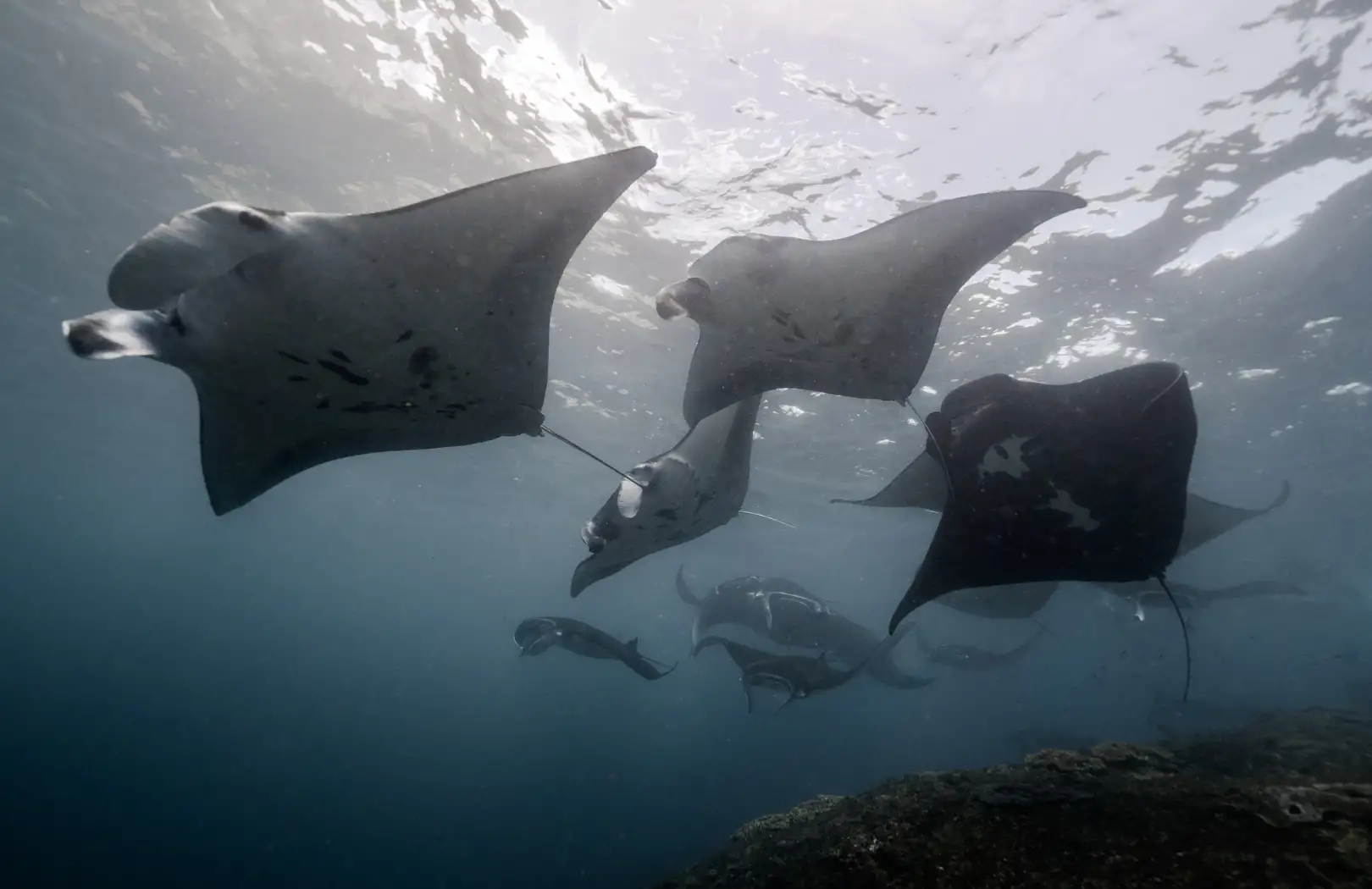Manta Rays

Favotrip Bali Tour
25 September 2025

Nusa Penida, Bali, is an important habitat for reef manta rays (Mobula alfredi) and also serves as a nursery ground for this threatened species. Visitors can see manta rays year-round at locations such as Manta Point and Manta Bay, although the dry season (May–November) often provides the best visibility. Manta rays are gentle, harmless to humans, feed on plankton, and have unique spot patterns on their bellies that can be used for individual identification.
About Manta Rays in Nusa Penida
- Species: Nusa Penida is home to reef manta rays (Mobula alfredi), a smaller species commonly seen in shallow waters.
- Behavior: Manta rays visit coral cleaning stations where fish remove parasites and dead skin. They are also often seen at Manta Bay, a popular snorkeling spot, though sea conditions can be rough.
- Importance of the Area: Scientists from the Marine Megafauna Foundation have reported many juvenile manta rays in these waters, making Nusa Penida a vital nursery ground for this threatened species.
When to Visit
Although manta rays are present year-round, the dry season from May to November usually offers the best visibility for snorkeling and diving.
What to Know
- Safety: Manta rays are harmless and have no sting. They are filter feeders that consume plankton and are not aggressive toward humans.
- Regulations: It is important to maintain a distance of at least 3 meters from manta rays to avoid disturbing them.
- Individual Identification: Each manta ray has a unique spot pattern on its underside, which scientists use to identify and monitor individuals.
Recommended Activities
- Snorkeling: Visitors can enjoy the experience of seeing manta rays up close by joining snorkeling tours at Manta Point or Manta Bay.
- Supporting Research: Travelers can contribute to manta population studies by uploading their photos to the Manta Matcher website to aid in individual identification research.









